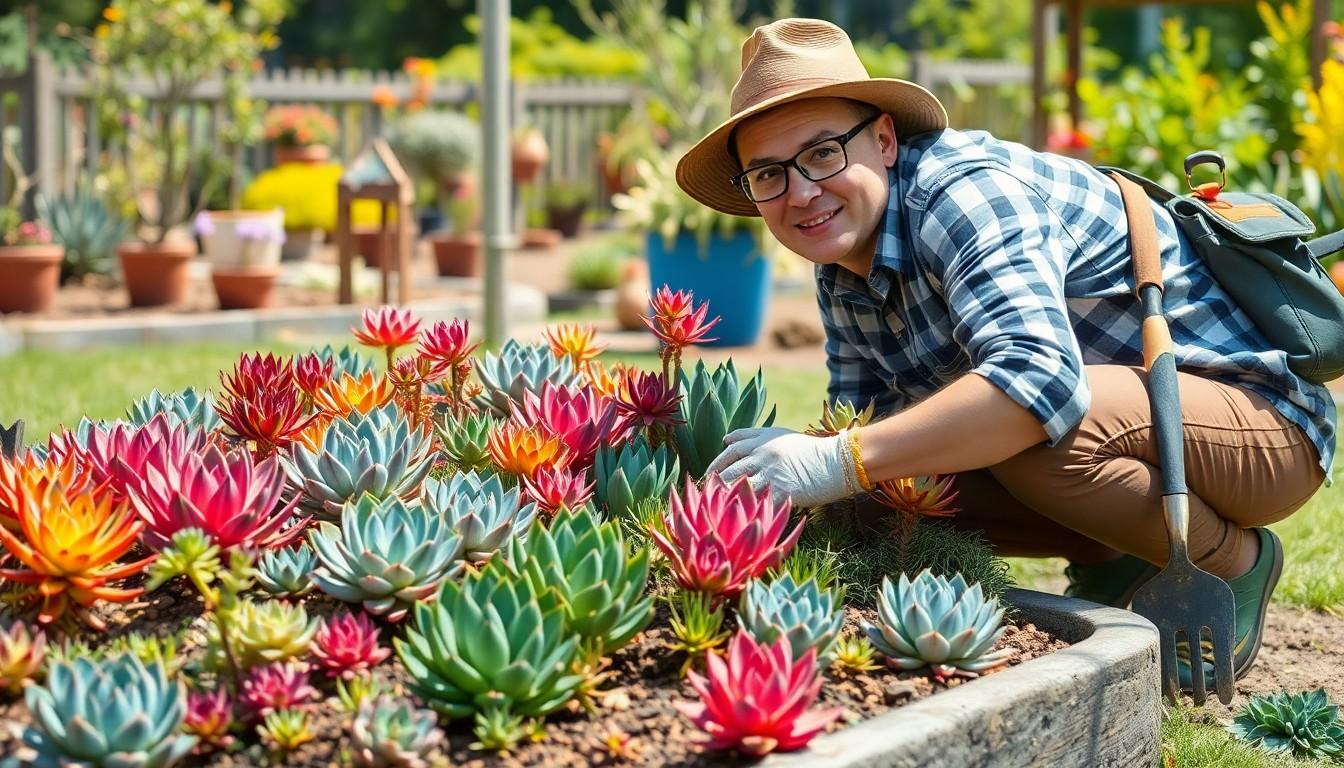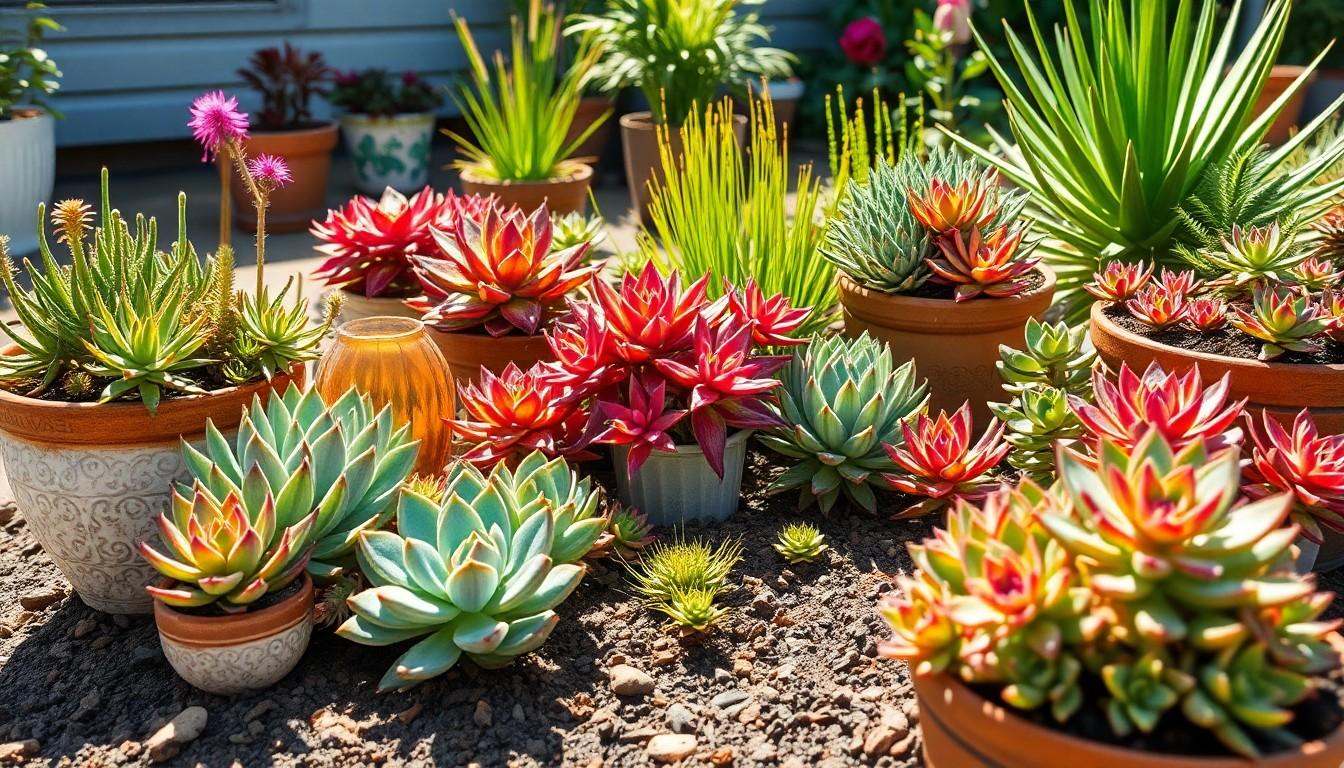Physical Address
304 North Cardinal St.
Dorchester Center, MA 02124

Imagine transforming your outdoor space into a vibrant oasis with low-maintenance charm. Planting succulents outside not only adds a pop of color but also makes you the envy of your neighbors—who knew being a plant parent could be this easy? These hardy little wonders thrive in various conditions and can handle a bit of neglect, making them perfect for anyone who’s ever accidentally killed a cactus (we’ve all been there).
Planting succulents outdoors offers numerous advantages, ranging from enhanced aesthetics to positive environmental impacts. These hardy plants thrive with minimal effort.
Colors and textures define the charm of succulents. Vibrant hues attract attention, enhancing outdoor spaces with beauty. Diverse shapes encourage creativity in landscape design. Succulents mix well with other plants, creating visually appealing arrangements. Their varying heights bring depth to gardens. Placing succulents in pots or directly in the ground allows for versatile layouts. Such arrangements improve curb appeal and invite admiration from neighbors and passersby.
Succulents adapt well to different climates, contributing to sustainable gardening. They require little water, making them suitable for dry regions. This low water requirement reduces overall consumption, significant amid growing drought concerns. Their ability to store moisture means they can survive in varying temperatures. Moreover, some succulents attract pollinators, supporting local ecosystems. Planting succulents can therefore enhance biodiversity in gardens. These plants improve air quality by absorbing carbon dioxide and releasing oxygen, creating a healthier outdoor environment.

Succulents require specific conditions to thrive outdoors. Understanding these needs enhances their growth and beauty.
Soil quality significantly influences succulent health. Drainage is the primary concern; succulents prefer a gritty, well-draining mix. Amending soil with sand or perlite improves drainage, preventing root rot. A pH level of 6 to 7 works best, promoting nutrient availability. Testing soil before planting assists in identifying deficiencies. Organic matter, like compost, can enhance soil structure but should be used sparingly. Proper soil ensures strong root development and vibrant growth.
Sunlight plays a crucial role in succulent vitality. Most succulents thrive in bright, direct sunlight for 6 to 8 hours daily. Positioning them where they receive morning sun with afternoon shade protects against scorching. Gradually introducing them to direct sunlight avoids stress. Some succulents tolerate partial shade but typically exhibit stunted growth without adequate light. Observing plants for signs of insufficient light, such as leggy growth, can guide adjustments. Ensuring optimal sunlight supports healthy, robust succulents.
Planting succulents outside requires a few specific steps to ensure they thrive. Careful consideration of location and soil preparation plays a crucial role in their success.
Selecting the right location for succulents is vital. Sunlight plays a significant role; most succulents require 6 to 8 hours of bright sunlight daily. Areas that receive morning sun and afternoon shade work best, reducing the risk of leaf scorch. Drainage should also be considered; avoid spots where water tends to pool. Placement near structures or rocks can provide some protection against harsh weather. Wind exposure deserves attention too; consider choosing a sheltered area to prevent damage.
Soil preparation affects succulents’ growth and health. A gritty, well-draining soil mix is essential to prevent root rot. Combining potting soil with sand, perlite, or gravel can improve drainage. Testing soil pH is important; aiming for a pH level between 6 and 7 supports optimal nutrient absorption. Adding amendments like compost can enhance nutrition while maintaining drainage. Digging deep, then loosening the soil allows roots to settle easily. Ensuring the right soil conditions prepares a solid foundation for planting succulents outside.
Outdoor succulents require specific maintenance to thrive and maintain their visual appeal.
Watering outdoor succulents follows a distinct rhythm. After planting, wait until the soil dries completely before the first watering. Aim for a deep soak to reach the roots, but avoid standing water. During the growing season, generally from spring to early fall, water them every two to three weeks. Adjust frequency based on rainfall and temperature conditions. In winter, reduce watering to once a month or even less to prevent rot. Always assess the moisture levels by checking soil dryness to ensure succulents receive adequate hydration without overwatering.
Pests can pose a threat to outdoor succulents. Inspect the plants regularly for common pests like mealybugs, aphids, and spider mites. A light stream of water can dislodge these pests effectively. For stubborn infestations, insecticidal soap or neem oil works well; apply it directly to affected areas according to package instructions. Introducing beneficial insects like ladybugs provides a natural pest control method. Keeping the area clean and free of debris minimizes pest habitats while promoting healthy growth. Always treat infestations promptly to avoid damage to the plants.
Planting succulents outside offers a unique blend of beauty and practicality. Their vibrant colors and diverse shapes can transform any outdoor space into a stunning landscape. With minimal care and the right conditions, these hardy plants thrive, making them perfect for both novice and experienced gardeners.
By focusing on proper soil preparation and sunlight exposure, anyone can create an inviting environment for succulents. Regular maintenance ensures they remain healthy and vibrant throughout the seasons. Embracing succulents not only enhances curb appeal but also contributes positively to the environment, making them a smart choice for sustainable gardening.